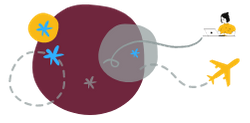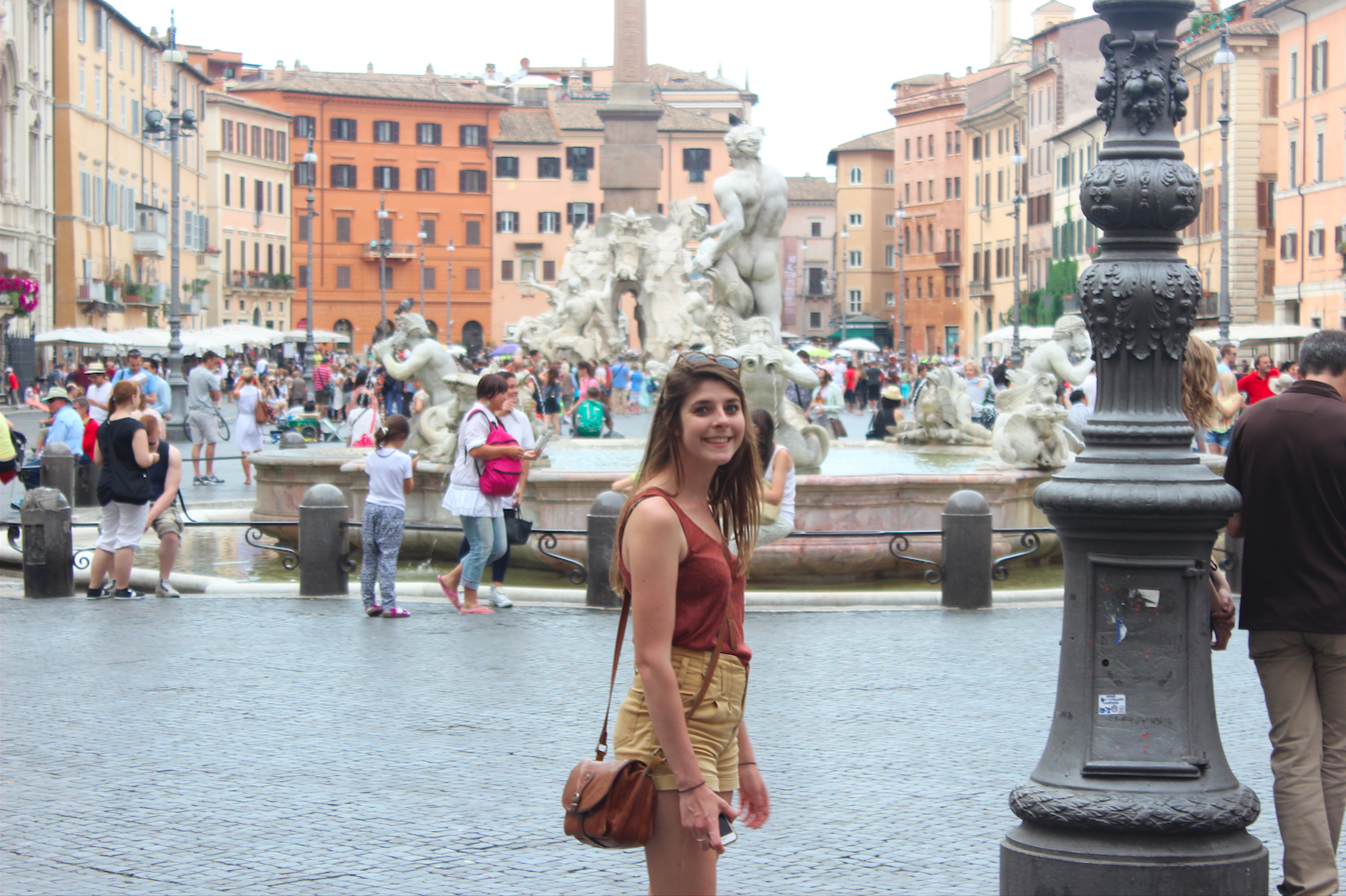Pre-departure:
Maastricht University in the Netherlands was not my first choice to do an exchange abroad. It was on my list, but only as an afterthought and because we were said to give 3 options. As it happened, Maastricht was chosen for me. Seeing as I was not really interested in this university, I had done absolutely no research regarding this city and the subjects that were available here. However, I immediately had to start with the administration regarding subject choices, as well as visa applications. This process can be quite stressful and had me very flustered in the beginning. However, as soon as I started communicating with the International Relations Office (IRO) from Maastricht University I could basically sit back and relax.
They were very helpful and gave us extremely clear details of which documents we had to provide to whom and when. Email communications with them was effortless. I could expect a reply from them within an hour from sending an email. They basically assisted us with every step of the visa process. A study visa for the Netherlands is quite a hefty amount, and had me counting my pennies even before I got on the plane. It amounts to about €310. I made an appointment for my visa application at the end of December, and I got an appointment for about 2 weeks later. I went to the Netherlands Consulate in Pretoria, because my parents live there. It is apparently also quicker if you do your application there, since that is their head offices. When going for the appointment in Cape Town, they have to send it to Pretoria first – thus extending the waiting period for your visa. I think I waited less than a week for my visa to be ready for collection. So despite the high cost of the visa, the process went extremely smooth.
I already had my flight booked at this stage. KLM has the best flight deals. A return flight costs anything between R6000 and R8000 if you book well in advance. I paid about R800 extra to have a flexible flight ticket – meaning I could change my flight dates at anytime without having to pay the additional tax fees that is usually required when changing your flight. I did this because I was not sure when I would be returning to South Africa. So my preliminary flight date for departure was set for the 26th of January. I said all my goodbyes and I was ready to set off on my adventure – with definitely not enough warm clothes.
Experience at the Host University:

Arriving at Schiphol in Amsterdam meant that I had to still take a 2-hour train ride to Maastricht. Maastricht is located in the south of the Netherlands – so I still had a whole trek across the Netherlands before I could arrive at my destination. The train ticket was about €26. Arriving at the accommodation that I had to make a home for the next 6 months; I started to pack out my things. The IRO was also very helpful in organizing this accommodation for us. This accommodation was called the Guesthouse, and only consisted of international students – that were studying at Maastricht for either a year or only a semester like me. A welcoming week programme was organized for all the new students, and was an extremely nice way to get to know the other students and to introduce us to the workings of the university we were going to be studying at.
After the welcoming week it was time for the classes to start. I knew Maastricht was famous for having an interesting manner of lecturing, however I did not realize how strange and different it would be! The system that is used in all subjects across Maastricht University is called PBL (Problem Based Learning). At first I was completely terrified, because I am used to Stellenbosch’s’ way of teaching, where you can get away with not being prepared for class. PBL consists of a lot of group work and open-ended problems that needs to be discussed in the group. All the classes are very small, with only about 10 to 15 students per class. This was really something to get used to. Since you cannot shy away in class, you have to do the readings for that particular class beforehand. The first few days I was not so sure what was expected of each student, but I quickly got used to it. I did however feel that there was a gap between me, and the regular students of Maastricht University. I was so amazed by their general knowledge and how everyone had an opinion (stated with facts) for everything that was discussed. From being at Stellenbosch I was used to being spoon-fed through the slides given before class, not having to really say anything in class, and not always having to think for myself. I am not saying that Stellenbosch is a bad university; I am merely stating that I realized there is not only one way to approach a teaching session.
All of the subjects I took also had a different way of approaching this PBL system. In the one subject, ‘Consumer Behaviour’, we were divided into groups of 4 people each, and each group had to present two sessions. Thus we as a group had to present the class for the sessions we were assigned to. In ‘Psychology and Economics’ each student had to present one session on their own. We were given the literature and had to make a PowerPoint presentation for our session and also explain difficult concepts. The point was also to involve the other students in class, and we were evaluated on how well we managed to do that. In ‘Network Economics’ there was no assigned literature. Each session only consisted of a problem statement, and then we had to find information before class that could be a potential answer the problem statement. In class we would then discuss amongst ourselves what could be the answers to each particular problem statement. These different approaches definitely made learning quite interesting, and I also felt it made me remember the work better when I studied for the exams. I also had the privilege of being appointed as a student-tutor for an undergraduate subject (‘Institutions, Behaviour and Welfare’). This was quite challenging, but also very rewarding.

In between classes I was also very fortunate to be able to travel extensively. Here is a list of all the cities (and countries in brackets) that I had the opportunity to visit: Cologne (Germany), Luxembourg City (Luxembourg), Antwerp (Belgium), Lille (France), Bruges (Belgium), Krakow (Poland), Warsaw (Poland), Berlin (Germany), Amsterdam (Netherlands), Den Haag (Netherlands), Paris (France), Budapest (Hungary), Brussels (Belgium), Barcelona (Spain), Rome (Italy), Dusseldorf (Germany), Liege (Belgium), London (England), Glasgow (Scotland). 6 months and 11 countries, I think that is a good record.

(I made a blog of a few of my first travels. Feel free to have a look: https://friendsinforeigncities.wordpress.com)
Return:
In the end I changed my return flight (luckily I had a flexible ticket!) from the 18th of August to the 20th of July. Almost a month earlier than I wanted to, but I realized that my money had disappeared quicker than I thought, and I still had a few academic obligations that I had to complete. So it seemed like the obvious choice to make my flight earlier. I would have loved to still visit Portugal, the South of France, more places in Italy, Czech Republic, and Switzerland. But at least I have some places left on my bucket list if I ever return to Europe. I returned to my parents’ house in Pretoria, since I no longer have a flat in Stellenbosch. I still have to complete my Masters’ thesis, and I can do that easily from home – with email communication with my supervisor. The initial plan was to attempt to complete my thesis while at Maastricht, but I think life got in the way. There was just too many fun and interesting things to do, to be able to sit and work on my thesis for long periods. Thus I have to complete it in the next few months, whilst applying for various jobs. The plan was always to apply for jobs in Johannesburg, since I feel that I have had my time in Stellenbosch and Cape Town.
Having had the opportunity to go on an exchange has definitely opened my eyes and widened my perspective on the world. Just to see how different nations of the world do things and interact with each other, as well as with other people has made me see and experience life in so many different ways. The one thing I believe South Africa can learn from European countries is their smooth and efficient infrastructure system. I only had a bike, but I managed to visit 11 countries! I think I made use of every type of public transport imaginable. From trains, to busses, to taxis, to planes, and even trams. Having to figure out how all these different transport systems work, and to buy the right type of tickets, makes you stronger and feel more confident in your own abilities (even though I know it is not such a big deal).
**Also a few things I learned that might be useful: Google Maps is your friend; never be afraid to ask for the WiFi password; buy comfortable shoes (because you will walk 30km a day while travelling); buy a selfie stick for solo travels; clear the cookies on your computer regularly when checking for flights; respect the fact that some people don’t drink or don’t eat pork or don’t speak English as well as you do; don’t exchange money at the airport; and always take your own pillow wherever you go.**

